“Trifles make perfection, but perfection is no trifle.” — Michelangelo
I recently made my way to Chapel Hill, North Carolina, home to my alma mater, the University of North Carolina. These days my periodic pilgrimages are focused visits with my oldest son who, with any luck and a lot of work, will soon graduate from UNC as a medical doctor. Occasionally, these visits include attending a football or basketball game. My son is always excited to show us all his usual local haunts, as though they are much different today than the ones I once knew.
The best of these spots by far turned out to be a Saturday evening visit to The Crunkleton bar. It is located in the heart of Chapel Hill, Franklin Street, and named after its founder and owner, Gary Crunkleton. This place is a fine, classic upscale bar, complete with bookshelves and billiards. Several (what looked to me to be ten-gallon) oak barrels were racked on their sides at the end of the bar with taps in them and occasionally being poured; house whiskeys, rum, and rye, I am sure. The bar prides itself on its wide array of cocktails done right. On this particular evening it was standing room only, and most of the patrons were not college students. There were at least five bartenders who were all pouring up drinks as fast as they could be served.

This occasion was the first time I have sat at a bar and shared an adult beverage with my now adult son. He ordered a draft beer; fair enough. I like to believe that with age comes wisdom–I ordered a Sazerac. For those readers who are not acquainted with this beloved classic New Orleans’ cocktail, it is a masterpiece when mixed by a talented bartender. The Sazerac uses a base spirit of rye with some application of absinthe; it is combined with demerara syrup and a dash or two of Peychaud’s bitters. It is chilled with ice, then finished with a simple twist of lemon rind and served in a chilled glass, sans ice. The Sazerac is at the top of the list for being a delicious, rich and well-balanced cocktail. Because its base spirit is rye, it fell out of popularity with the general rise of bourbon decades ago. It was loosely replaced by the (both famous and fictional) Don Draper’s favorite Old Fashioned in recent years.
Without much delay, my Sazerac arrived. Fortunately for me, our bartender was indeed an expert in his craft. This would be the best one I had ever tasted…it was absolutely textbook perfect. As I savored this libationary gem, I began thinking about the various ryes that I enjoy and the people who produce them. Then I began to ponder where rye whiskeys are in the market today. Even when I am out enjoying a drink…I’m still working.
Many people are still quite unfamiliar with rye as the market for it is relatively small. But today’s rye whiskeys are simply underrated. There, I said it. Now, you might be wondering why this is the case. There are a number of factors that developed over the course of many decades that contributed to rye whiskey being reduced to a niche status. This, however, is rapidly turning around as the landscape of whiskey variety broadens. A new chapter in the story of North American rye is rapidly unfolding.
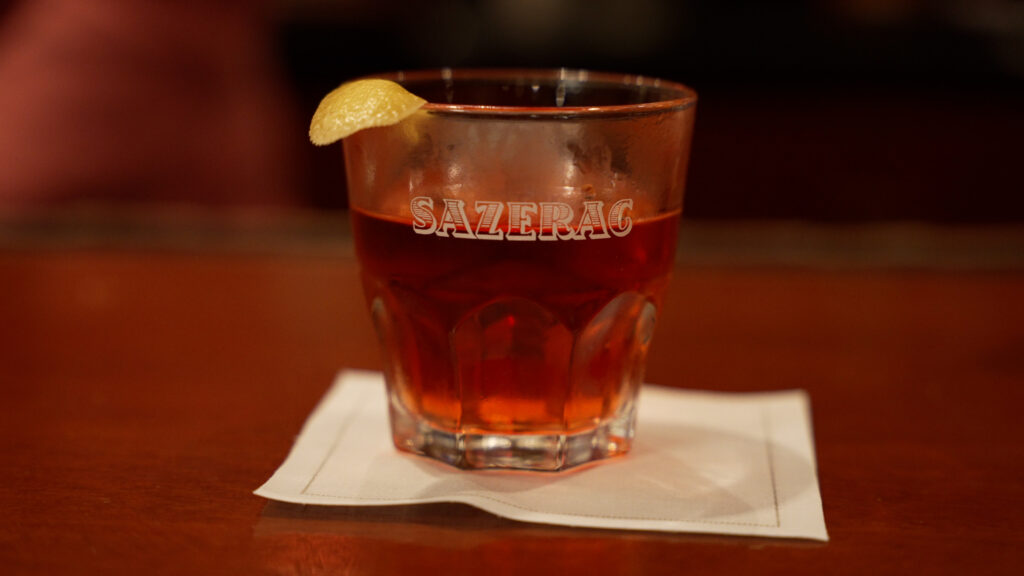
A Brief History of Rye Whiskey
It is true that rye whiskeys were once predominant in America prior to the advancements in and resulting explosion of corn crop cultivation. Many refer to rye whiskey as “America’s Original Spirit,” and yet relatively few Americans know much about rye today. By the numbers, if we look at 1810, distillers in Kentucky produced 2.2 million gallons of bourbon while Pennsylvania distillers produced 6.5 million gallons of rye whiskey that year.[i] But this situation was reversed over the decades that followed. The advent of corn as a booming commercial crop in North America put rye — and the whiskey made from it — on the back burner by the mid-1850’s. Corn was less expensive to produce with a higher yield per acre.
During Prohibition, from 1920 to 1933, whiskey was still made and consumed on a far more restricted basis either legally by medical prescription or illicitly through bootleggers. With the entire whiskey industry restarting from scratch in 1933, consumer tastes and preferences were already shifted away from rye to predominantly corn-based whiskeys, the kind that were consumed during Prohibition. After the miserable years of Prohibition when distilleries were again slowly restarting, rye had been nearly forgotten in America, while its stronghold remained in Canada as a base for their traditional blends.
Coming out of Prohibition American politicians began a new phase of market manipulation; the introduction of corn subsidies.
“Just before and after Prohibition, during the First and Second World Wars, the U.S. government subsidized corn, making it a far more enticing crop for farmers. Corn got cheaper and more available, while rye retained its inherent expense and difficulty. Distillers flocked to corn before Prohibition to make a quick buck and after to reestablish their industry.”[ii]
The demand for domestic rye whiskey became nearly nonexistent for much of the Twentieth Century. There was simply no more reason for American distillers to continue to produce much of it. While Canadian rye whisky imports were big in the 1960’s and 1970’s, the variety of traditional American fine ryes that once hailed from New York, Maryland, Pennsylvania, and Kentucky were long gone. They would not begin to slowly reappear on store shelves again for nearly eighty years after the end of Prohibition.
What About Rye?
Why do we need rye whiskey and how is rye whiskey different than other expressions? American Rye whiskey is required to have at least 51% rye in its mashbill.[iii] The result is a robust and complex flavor profile. This can present challenges to those who have an underdeveloped palate, or are too timid to sample anything beyond their beloved bourbon. Then there are those who simply do not like rye. Fair enough. Jim Murray writes that rye whiskey faces three main challenges:
“First, rye is a lot more expensive to buy than corn; second, it is more difficult to control; third, the powerful, intense nature of the grain means that distillers are frightened that too much taste might frighten off customers.”[iv]
Apparently, the modern American palate is not burly enough to handle a whiskey that is too flavorful. Perhaps the flavor complexity of rye sends some people to their cocktail “safe space.” Murray’s right, though; go to any liquor store and there’s a hundred corn-based whiskeys that almost taste the same as each other — tamed by charcoal filtration and watered down — all claiming to be “smooth” or some similar adjective.
Rye whiskey is something different and offers the consumer a unique complexity that will intrigue and challenge even the most strident bourbon lover’s palate. In contrast to corn-based whiskeys such as bourbon, rye often exhibits overall bolder, stronger, spicy notes along with combinations of flavors which can include baking spice, floral, oak, grain, dried fruit, cinnamon, citrus, cocoa, cardamom, leather, espresso, caramel, mint, vanilla, molasses, nutmeg, honey, orange, plum, pepper, fresh-baked bread, herbs, and grass. (No single rye would have all of these tasting notes.) The intensity and complexity is different than the typical weaker flavor profiles that we have come to expect from the average bourbon or other American whiskey. The question remains: is the modern American palate ready for rye whiskey again?
"First, rye is a lot more expensive to buy than corn; second, it is more difficult to control; third, the powerful, intense nature of the grain means that distillers are frightened that too much taste might frighten off customers." -- Jim Murray
A New Chapter for Rye Whiskey
Although the tastes and preferences of the consumer have fluctuated over time, some factors in the story of rye have not changed. The benefits of growing rye are the same as they always were; as commercial crops go, rye is a relatively easy to plant and grow. It is durable and quite a hardy crop that is able to grow in a wide range of vastly differing climates in almost any kind of soil. The same cannot be said for corn. However, the process of distilling rye is another issue as it presents a series of specific challenges for the distiller; the mash can easily turn into a semi-solid, gooey mess if not processed properly. Some distillers are just not up to the task of dealing with that, while still others have perfected it today. Many of the defunct rye whiskey brands were once sold off to larger distillers during Prohibition, and much of their records were saved which often included the mash bills and techniques used to produce them. Several of these labels have been revived by the larger distillers while the craft distilling industry creates a wide variety of new rye expressions to explore.
The consumer sentiment towards rye whiskey is rapidly changing and people are once again warming up to it. Major contributors to this movement are a number of distillers who are quite committed to their craft and to the cause of creating and promoting the finest rye whiskeys. As a result, the demand for rye whiskey is on a meteoric rise although from an admittedly low starting point.
“‘…the Distilled Spirits Council of the US (Discus) found that rye whisky volumes have soared by 1,275% between 2009 and 2019…Rye whiskey has been one of the best-performing spirits categories since 2009,’ says Discus economist Hasan Bakir. ‘Its recent performance has also been strong, with supplier sales doubling to US$356 million in 2022 from US$175m in 2017. The rye whiskey category also did well relative to overall American whiskey, rising to 7% [share] in 2022 from less than 1% in 2009.’”[v]
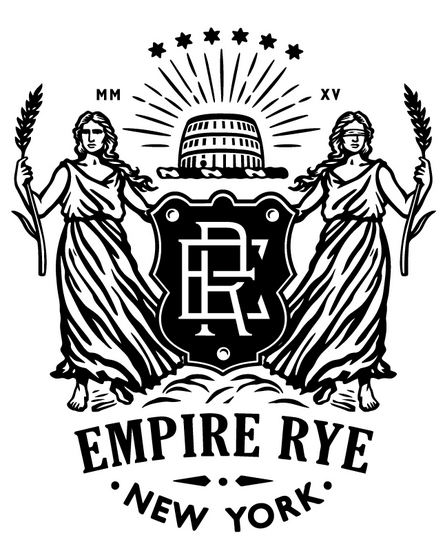
Empire Rye
In the state of New York, the rye whiskey renaissance is being driven by talented people who are dedicated to the tradition of distilling rye at mostly small to medium size operations. The craft distillers are the ones driving the category. The 2023 documentary film by Alec Balas titled, “Fire, Water & Grain: The Story of Empire Rye” profiles six distillers and others in the industry who after two years were successful in officially defining a new category of New York Rye in 2017, designated as “Empire Rye.”
To qualify to be labeled as Empire Rye, the mash bill must contain at least 75% rye grain originating (grown in) from the state of New York, conforming to the New York Farm Distillery requirement. It must be mashed, fermented, and distilled to no more than 160 proof, then barreled and matured at a single New York distillery in a single distilling season. Empire Rye must then be aged for a minimum of two years in charred, new oak barrels, and enter the barrel at no more than 115 proof.[vi]
I have not had the opportunity to try any of the Empire Ryes to date, but they are on my list to hunt some down.
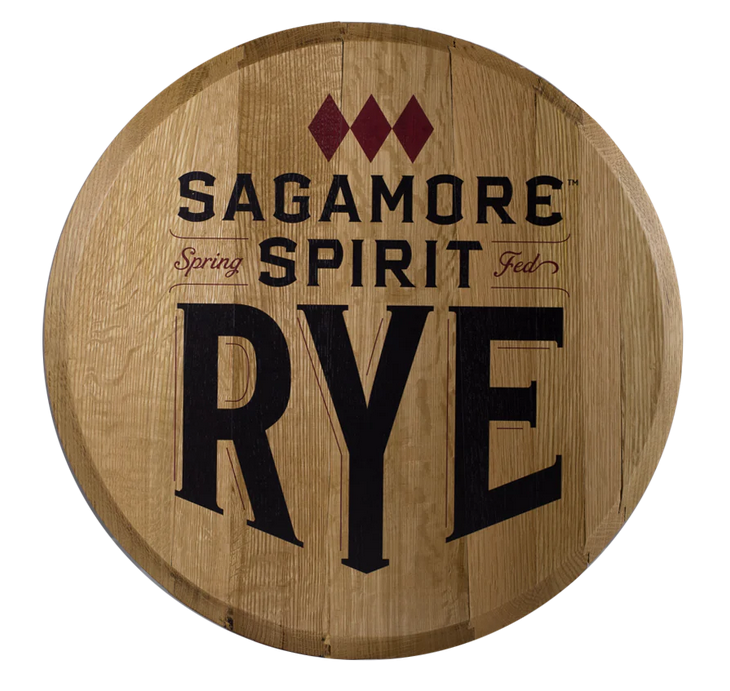
Maryland Ryes
Likewise in Maryland, local distillers have revived traditional “Maryland style rye” whiskey. In 2023 the Maryland State Assembly declared that Maryland Rye as the official state spirit. This proclamation is celebrated with an annual three-day festival called the Maryland Rye Revival, featuring many Maryland craft distillers. Indeed, a hundred years after Prohibition began, a genuine rye whiskey renaissance is well underway there. Unlike the clearly defined rules of Empire Rye, Maryland style rye has no specific legal definition, leaving the interpretation of it rather fluid and murky.
“The consensus among whiskey drinkers and those in the whiskey industry, now and in the past, is that Maryland style whiskey, is Rye Whiskey. The recipe is loose, but it has a mash bill of mostly rye, a lot of corn, and a little of something else, usually malted barley but could be wheat or another grain. The recipes vary, and they always have…”[vii]
“The distillers at Sagamore…make two batches of whiskey, one almost entirely with rye grain and the other with just 52 percent rye — the rest being mostly corn — which they then blend together.”[viii]
However it is expressed, the current Maryland style offerings are indeed a delicious departure from any standard bourbon and are worth keeping on your shelf. Among these, Sagamore indeed is a standout.

Virginian Rye
Virginia also has a long tradition of producing rye whiskey. George Washington wrote to his nephew, Col. William Augustine Washington, with regards to his own distillery at Mt. Vernon on 27 February 1798:
“I make use of no Barley in my Distillery…Rye chiefly, & Indian Corn in a certain proportion, compose the materials from which the Whiskey is made.[ix]” Today, the official spirit of the Commonwealth of Virginia is the remade version of George Washington’s rye whiskey, made with the same craft of his original version.[x] George Washington’s Rye® is now its own brand made at historic Mt. Vernon. Its mashbill holds to Washington’s formula of 60% rye, 35% corn, and five % malted barley and was twice distilled. It is only offered in 375ml bottles in three configurations: as unaged white whiskey 43% ABV/86 proof ($98), a two-year aged straight rye 43% ABV/86 proof ($188), and a five-year aged 46.5% ABV/93 proof ($225). Admittedly these are niche items, priced and intended primarily for visitors to purchase at Mt. Vernon. I don’t know anyone willing to pay $98 for a half bottle of white dog rye.
Novelty whiskey aside, fine Virginian ryes are now being produced by several distillers including Copper Fox Distillery, Reservoir Distilling, Catoctin Creek Distilling Company, and KO Distilling to name a few.
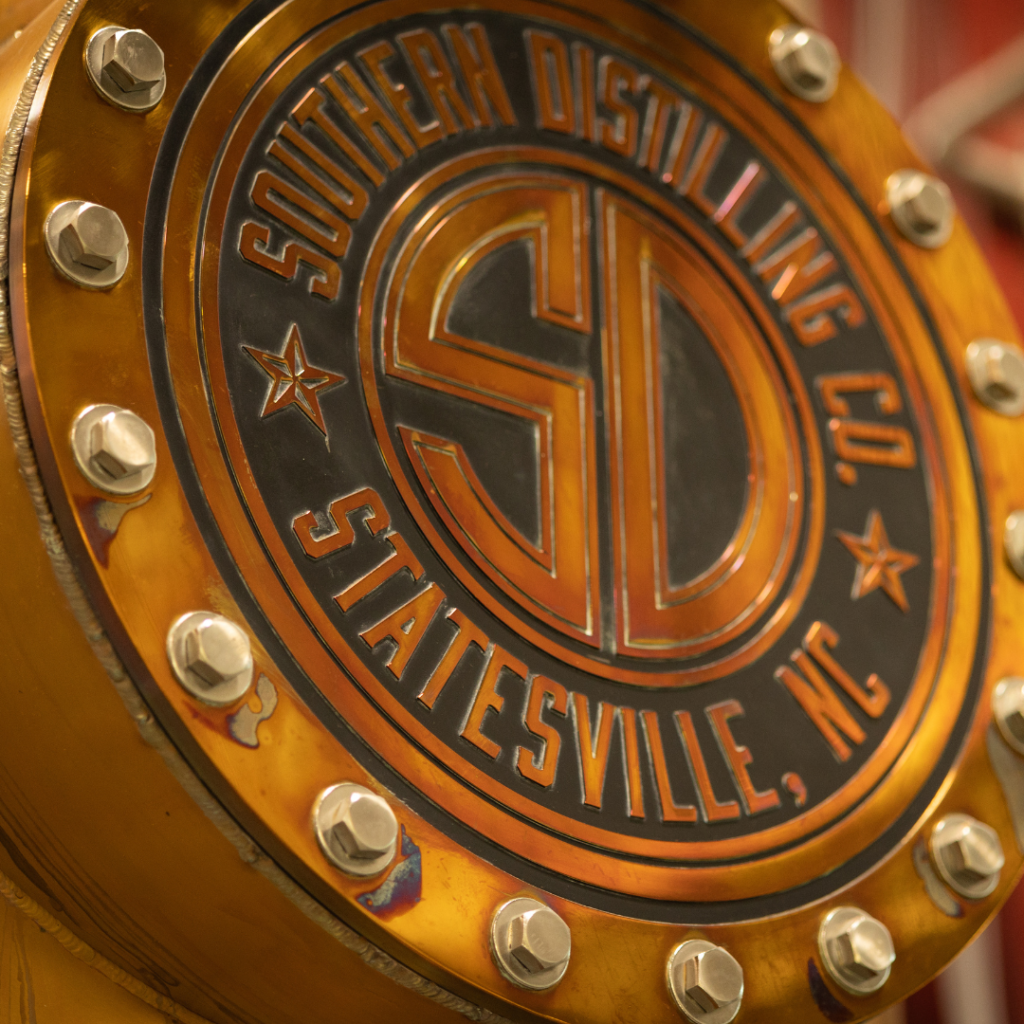
Plenty of Other Flavorful Ryes
If we imagined that rye whiskey were today a city instead of a product, Pete Barger would likely serve a term as mayor of this “Ryetown.” Pete is a talented producer and promoter of signature wheat and rye-based whiskey and classy high-rye bourbons. He knows that quality rye has so much more to offer compared to the endless wash of “me too” bourbon expressions seen marketed on that giant wall of whiskey found at almost every liquor store these days. Pete is the co-owner of Southern Distilling in Statesville, North Carolina, along with his wife and co-owner Vienna Barger.
I have written extensively about this distillery in the past[xi], and I found it interesting that many of the core expressions produced there under the Southern Star label are either rye or high-rye bourbons. These include Southern Star Double Rye which is a tasty blend of straight rye whiskeys. Their Standard High Rye Straight Bourbon Whiskey has a mash bill of 60% Corn, 36% Rye and four % malted barley. There are also single barrel releases and several wheated expressions in their portfolio.
“There’s more to American whiskey than Kentucky and Tennessee,” Pete says, and he is right. Pete’s Southern Distilling Company is no small operation, producing over 20,000 barrels a year, but he echoes the same sentiment of many small and medium producers today. He attends to his distillery with the same high level of care and attention to detail that any craft distiller would.
I asked Pete about his focus on rye and wheat and he said, “Because I distill what I like,” and he likes rye. The Southern Star products are of the highest quality and some of their product line would easily be on par with both Michter’s and Pappy Van Winkle in a blind tasting. I can tell you that Pete’s desire to “focus on what they do best” has indeed proved to be the best course. Every part of the process from grain selection to blending is a hyper-focus point. If you take a distillery tour with Pete he uses the words “consistency” and “quality” quite often. This is because they are the primary focus of the entire process there, and the finished product clearly shows this. I can promise you that anyone who says they do not like rye whiskey has not sampled any of the Southern Star line.
There are also a giant hoard of “me too” ryes on the shelves that are brought to market by large, third-party commercial distillers and bottled by non-distilling producers under various labels. This is done for several possible reasons, most commonly being that these distillers are generally smaller and while they may not have the facility or ability to distill rye, they do have the capability for finishing it well and making a final product that is unique to their label. They understand that product line extensions are an important key to driving brands. Just check the distilling statement on the bottle. This is not to disparage these ryes, in fact most of them are good-to-great choices. I only mention this so that you know what you are getting as a consumer.
Today there are a growing number of rye expressions on the shelf to choose from. Large distillers are certainly in the game. As I survey my whiskey “library” at home I see that I have no less than twelve different rye expressions on hand. I could fill a few more pages for you describing them all, but to spare you, I have compiled notes on just a few of my favorites which are generally available.
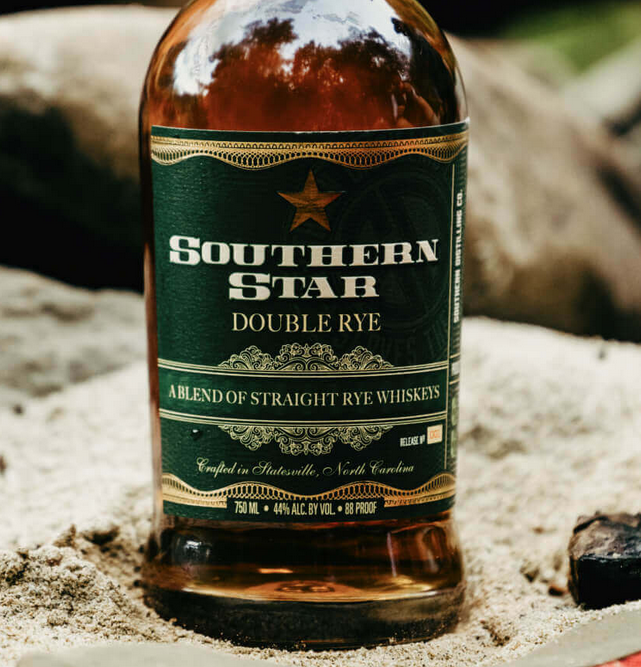
Southern Star Double Rye 44% ABV / 88 proof. 750ml. Retail $35. From their website: “A blend of remarkable straight rye whiskeys combined in perfect ratio and finished in premium bourbon barrels creating a genuinely unique balanced rye whiskey. This delightfully herbaceous and citrusy spirit smooths into a sizzle that warms the mouth before melting into a vanilla sweetness that hangs toward the back of the palate.”
This is one of those high quality rye expressions that never disappoints. Everything from the color, the nose, the palate and the finish all make it clear that this rye blend consistently drinks far above its price point. Southern Star Double Rye is certainly not your “average” rye whiskey. It exhibits a beautiful golden color and delivers its layered flavors with a robust body. On the nose, there are oak and spice notes which are muted by an undertow of a subtle sweet aroma. On the palate: rye spice followed by baking spice, and traces of peppermint followed by a nice, clean finish. This would certainly be the preferred rye for introducing someone to rye for the first time. It is a versatile and welcome treat for seasoned rye lovers, and the one I prefer above the mass-produced national brands.
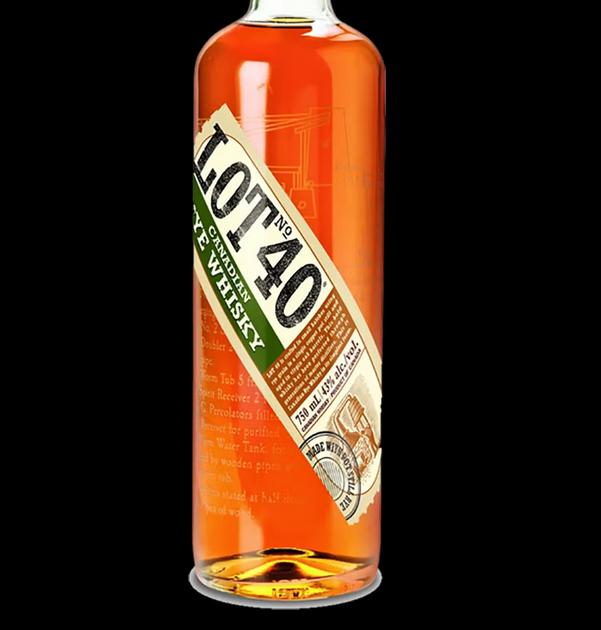
Lot 40 Canadian Rye Whisky. 43% ABV / 86 proof. 750ml Retail $38- $45. From their website: “The Road to Perfection Does Not Pass Through Compromise. There’s a place where every last detail matters; where a fire burns that refuses to settle or be satisfied. Find that place and you’ve found your way to Lot 40 – where we’ve distilled generations of knowledge, passion and hard work into the ultimate expression of Canadian Rye Whisky.”
I’m going to stop them there. Is this a great rye whisky they are talking about or are we introducing a novel? Lot 40 is unlike the many other popular expressions of Canadian whisky that dominate the shelves. I’m generally not a fan of Canadian whisky. What makes this one the best in its class for me is the fact that its mashbill is 100% rye, and they had me at “…distilled in a traditional copper pot still one batch at a time.” Having cut my teeth on Irish Whiskey back in the day, I’m a sucker for a whisky from a copper pot still. The Irish and the Scotch know very well all the benefits of using copper, and that’s a subject of its own. With Lot 40, they have accomplished everything that Canadian rye whisky should be instead of the mass-produced, watered down and caramel colored blah sold in ornate glass bottles. There is a sweetness to this rye; some toffee and vanilla dominate; oak and dried fruit are definitely there, too. This rye has a bit of zip to it as well, which I think would suit it to the Sazerac or even an Old Fashioned, if one was so inclined. Liquor.com called Lot 40 the best Canadian whisky[xii], and I have to agree with them.
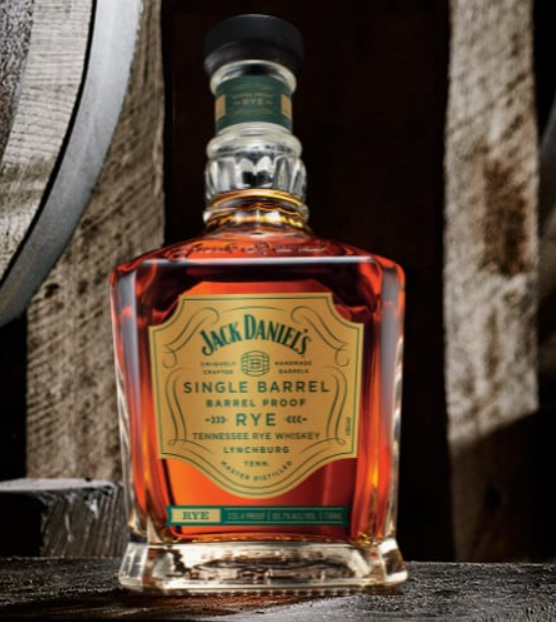
Jack Daniel’s Single Barrel Barrel Proof Rye. 62.5% – 70% ABV / 125 to 140 proof. (Varies by barrel) 750ml Retail $65 – $75.
From their website: “It’s whiskey as nature intended it—bottled straight from the barrel at its full proof. Intense, smooth, and remarkably varied, Barrel Proof is bottled at anywhere from 125 to 140-proof, taking Jack’s trademark vanilla and toasted oak flavors to bold new levels”
While it is debatable as to whether or not “nature intended” for people to make whiskey, this is a high quality rye expression that is seeing an increasing amount of attention. It can still be difficult to find in certain locales at present, but with some diligence, it can be secured. This creation stands among the finest ryes on the market and is becoming the “go-to” rye for a lot of rye enthusiasts. It certainly has a higher price point than many others on the shelf, and Jack Daniel’s is not traditionally known for their rye. However, to pass on this one would be a mistake, even if you’re not a “high proof” sort of person. The flavor is rich and intense with the full bouquet of the kinds of notes that rye is known for. If you’re not into high proof expressions, maybe try their Single Barrel Rye (non-barrel proof) instead, which carries a manageable 47 ABV.
If you are a whiskey enthusiast looking for something new and different, there’s no reason not to explore what is happening with rye today. Rye expressions deliver to us what bourbon once promised us. And I can promise you that when making my next trek back to Chapel Hill, a Sazerac at the Crunkleton will be a personal priority.
Citations
[i] McLaughlin, D. (2024b, January 19). The history of Rye Whiskey: Cool Material. Cool Material |. https://coolmaterial.com/feature/history-of-rye-whiskey/
[ii] IBID
[iii] This differs from Canadian Whisky or rye which is often thought of as rye even though it might not contain any rye at all if it is not produced for export to the U.S.
[iv] Murray, J. (2000). Jim Murray’s Complete book of whisky: The definitive guide to the whiskies of the world. Carlton. Page 161.
[v] Carruthers, N. (2024, February 19). Rye smile: Why America’s original spirit is on the up. The Spirits Business. https://www.thespiritsbusiness.com/2024/01/rye-smile-why-americas-original-spirit-is-on-the-up/
[vi] https://distiller.com/articles/empire-rye/
[vii] https://marylandspirits.org/what-is-maryland-rye/
[viii] https://www.nytimes.com/2019/02/14/dining/drinks/rye-whiskey-maryland.html?auth=register-google1tap®ister=google1tap
[ix] https://founders.archives.gov/documents/Washington/06-02-02-0095
[x] https://whiskeynetwork.net/2024/02/all-the-presidents-rye/
[xi] See https://whiskeynetwork.net/2024/08/southern-distilling-defining-and-refining-grain-to-glass/
[xii] Sterling, J. (2022, April 22). The 13 best Rye Whiskeys to drink. Liquor.com. https://www.liquor.com/best-rye-whiskeys-4846934



